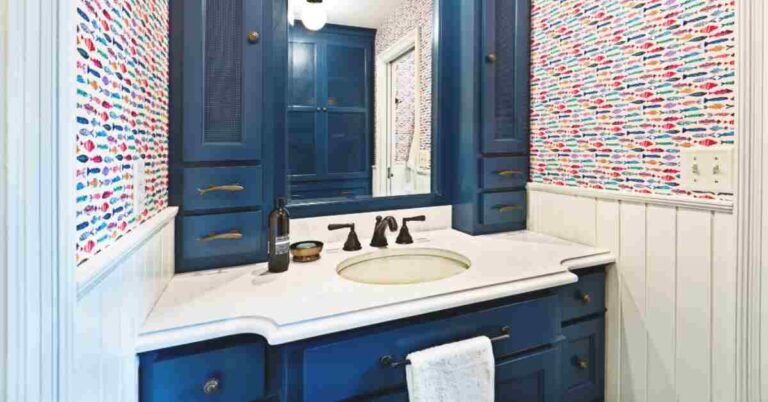Bathroom caulk, sealant, and silicone are essential for preventing water damage, mold growth, and gaps in your bathroom fixtures. But how long does bathroom caulk dry and cure before you can use your bathroom again?
This article will answer this question and provide some tips on how to apply them properly.
What Are the Differences Between Caulk, Sealant, and Silicone?
Before we get into the drying times, let’s clarify the differences between these three terms. They are often used interchangeably but have distinct characteristics and uses.
- Caulk is a general term for any material that fills cracks or gaps between surfaces. It can be made of acrylic, latex, polyurethane, or other substances. Caulk is usually applied with a caulking gun and can be painted over once dry.
- Sealant is a caulk designed to seal joints or seams against moisture, air, or dust. It can be made of silicone, polyurethane, polysulfide, or other substances. Sealant is usually applied with a caulking gun or a tube and can be flexible or rigid once dry.
- Silicone is a type of sealant that is made of synthetic rubber. It is resistant to water, heat, UV rays, and chemicals. Silicone is usually applied with a tube and cannot be painted over once dry.
Each material type has advantages and disadvantages, depending on the application. For example, acrylic caulk is easy to apply and clean but can shrink and crack over time.
Polyurethane sealant is durable and flexible but can be messy and hard to remove. Silicone sealant is waterproof and long-lasting, but it can be expensive and difficult to work with.
How Long Does It Take for Bathroom Caulk, Sealant, and Silicone to Dry?
The drying time of caulk, sealant, and silicone depends on several factors, such as the type of material, the thickness of the application, the temperature and humidity of the environment, and the ventilation of the area. Here are some general guidelines for each type of material:
- Caulk usually takes about 24 hours to dry completely. However, you can touch or paint over it after 2 to 4 hours, depending on the type of caulk. You should avoid exposing it to water or moisture until fully cured.
- Sealant usually takes about 24 to 48 hours to dry completely. However, you can touch it after 4 to 6 hours, depending on the type of sealant. You should avoid exposing it to water or moisture until fully cured.
- Silicone usually takes about 24 to 72 hours to dry completely. However, you can touch it after 6 to 12 hours, depending on the type of silicone. You should avoid exposing it to water or moisture until fully cured.
These approximate times may vary depending on the specific product and conditions. Always follow the manufacturer’s instructions on the package to ensure optimal results.
How to Apply Bathroom Caulk, Sealant, and Silicone Properly?
To ensure a smooth and effective application of caulk, sealant, and silicone, follow these steps:
- Clean and dry the surfaces that you want to caulk or seal. Remove any old caulk or sealant with a scraper or a utility knife.
- Cut the tube tip or cartridge at an angle according to the gap size you want to fill. Use a caulking gun if needed.
- Apply a steady bead of caulk or sealant along the gap or joint. Press it firmly into the gap with your finger or a tool. Smooth out any excess material with a damp cloth or sponge.
- Let the caulk or sealant dry according to the manufacturer’s instructions. Do not touch or expose it to water or moisture until fully cured.
Here are some additional tips for applying caulk, sealant, and silicone:
- Choose the right type of material for your project. For example, use acrylic caulk for interior walls and windows, polyurethane sealant for exterior doors and siding, and silicone sealant for showers and tubs.
- Use masking tape to create clean edges and prevent smearing on adjacent surfaces.
- Work in small sections at a time and avoid stopping or starting in the middle of a bead.
- Use a wet finger or tool to smooth out the bead before it skins over.
- Remove the masking tape before the caulk or sealant dries completely.
- Clean your tools and hands with soap and water (water-based products) or mineral spirits (solvent-based products).
Conclusion
Bathroom caulk, sealant, and silicone are important for maintaining your bathroom’s appearance and functionality. They require some time to dry and cure before you can use your bathroom again.
Following the guidelines and tips in this article, you can ensure a successful and hassle-free application of these materials.
FAQ
Wait for fully cured caulk before the shower (24-72 hours). Early use may wash away or crack the caulk, leading to water damage.
To check if the caulk is cured, follow package instructions. Press a small area with your finger; if it’s firm and rubbery, it’s cured; otherwise, it’s not.
If you get caulk wet before it cures, you risk ruining the seal and wasting time and money. Water can cause the caulk to shrink, crack, peel, or lose adhesion. This can lead to leaks, mold, and mildew in your bathroom. To avoid this, keep the caulk dry until it is fully cured.
You can use some methods to speed up caulk drying time, but they may not work for all types of caulk. Some of them are:
1. Use a fan or dehumidifier to lower humidity and increase air circulation.
2. Gently warm the caulk with a hair dryer or heat gun to evaporate moisture.
3. Opt for fast-drying caulk for quicker results.
To remove old caulk from your bathroom, use a utility knife to cut along the edges and peel it off. Scrape any remaining caulk, then wipe the surface with mineral spirits or rubbing alcohol. Let it dry before applying the new caulk.


